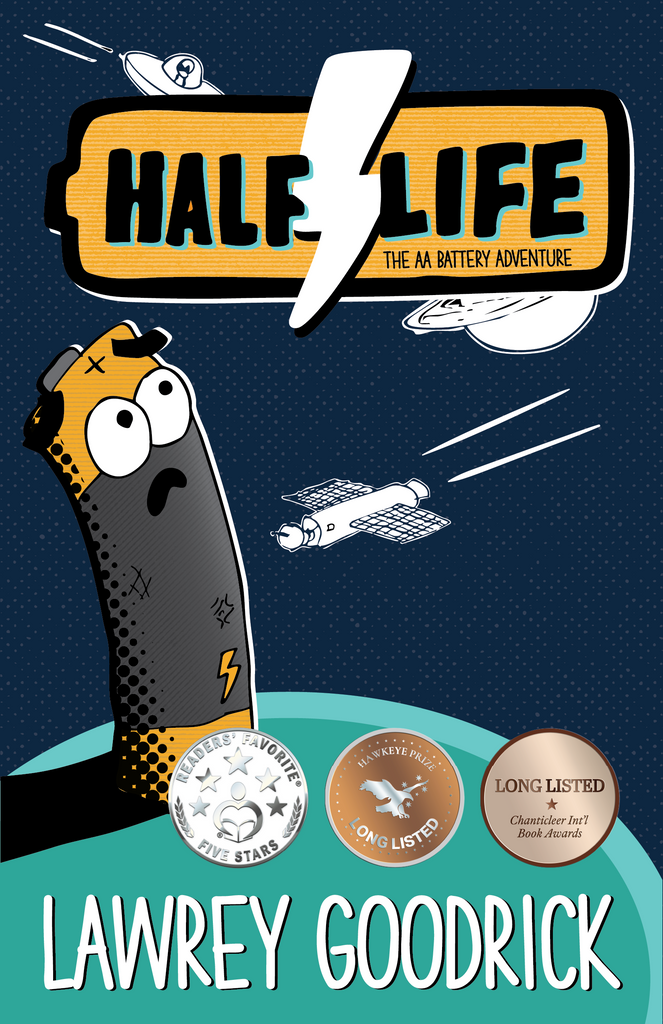Powering Up Young Minds: Lawrey Goodrick’s Half-life Sparks STEM Curiosity

Author and graphic artist, Lawrey Goodrick’s, young adult’s illustrated novel, Half-life, is a delightfully humorous, informative, creative, quirky, unique exploration of the world of energy, batteries and science.
In essence it is an adventure story involving “Half”, a small battery, and his battle to survive in a changing world while rescuing his family and friends. Replete with numerous puns and humorous graphics on scientific terms, equations, theories, people, and practicalities, it is a coming-of-age story loaded with drama, first love, and taut family relations.
It is a must-have in a youngster’s library, introducing them in a fun way to among other things, physics, chemistry, astronomy, and general science, and the digital, binary world they now inhabit. It will assist them to understand and appreciate nerdy stuff, if they are not that way inclined, and get joy from Goodrick’s world if they are so inclined. In this age of examining energy options, the story will help them understand many of the ways our energy needs could be addressed, some of which are, now, obscure. Finally, it explores the possible energy futures in an encouraging way, perhaps of comfort to young people looking at ways to contribute and take up roles within it.
As with his first book, Cans for Change, Goodrick also integrates a deep ecological concern for the environment throughout his narrative.
This book would be an invaluable teaching resource available in school libraries, and as text, enabling a multitude of student tasks. Examples might include: creating a glossary of the terms used throughout (Science literacy); Discussing key equations (Science); compiling a biography of key scientists mentioned in the text (Career Studies); time-lining the critical historic scientific breakthroughs involved to bring us to this point in our scientific journey (History); or documenting and discussing the numerous literary artifices used to propel this imaginative story (English).
Goodrick needs to be commended for publishing such a book to coincide with acknowledgement that we desperately need to interest the next generation in STEM.
Peter Long, QDAH, BA, MEd, EdD
Author educator
